Five moments that defined the 2022 Tour de France
From Roglic's crash to the Pyrenean power play, we dissect a spectacular edition of the Grande Boucle
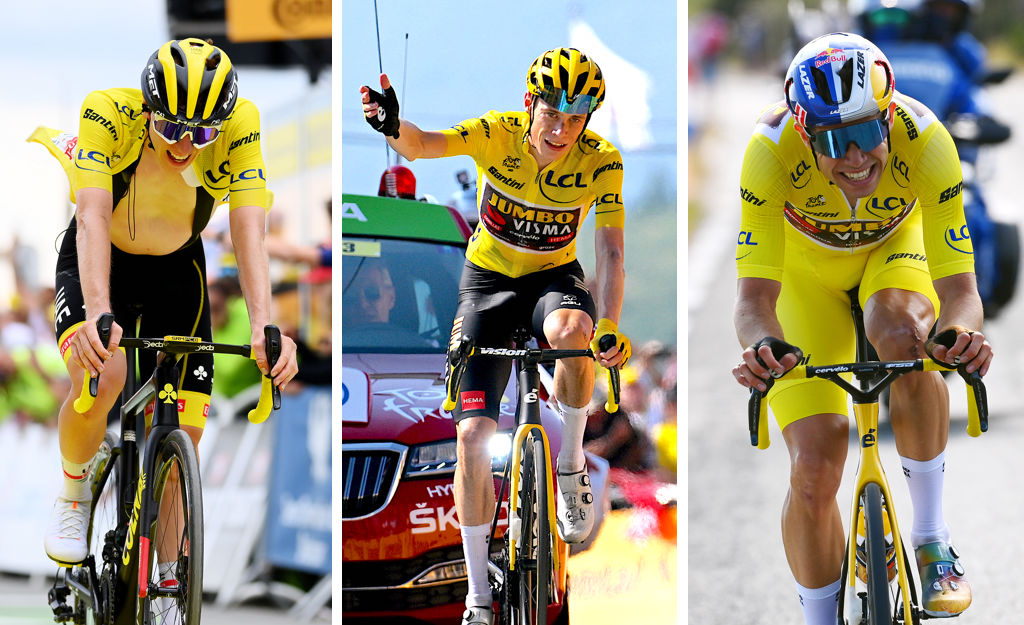
As always, it was a Tour de France of a thousand stories, from Fabio Jakobsen’s emotional win in Nybørg to Michael Mørkøv’s doomed but noble effort to finish inside the time limit at Carcassonne; from Michael Matthews’ craft at Mende to Tom Pidcock’s drifting descent of the Galibier.
Run off at an average speed in excess of 42km, the 2022 Tour de France was the fastest in history, and it exacted a brutal toll on its participants. COVID-19 contributed to the rate of attrition, but so too did the searing heat and relentless nature of the racing. Just 135 riders made it to Paris, the lowest number of finishers since 2000.
There were compelling performances from men like Geraint Thomas, who placed third after what was perhaps the most complete Tour he has even ridden, or Romain Bardet, who battled gamely either side of a dreaded jour sans in the Pyrenees. David Gaudu began to deliver on his considerable promise with a fine 4th place finish in Paris.
As the Tour drew on, however, it became increasingly clear that the race for yellow was again a straight fight between Tadej Pogačar and the Jumbo-Visma collective. In 2020 and 2021, Pogacar had the better of that contest. This time out, the team in yellow and black had his number, as Jonas Vingegaard emerged to claim Denmark’s second overall title after Bjarne Riis in 1996.
Cyclingnews looks back at some of the moments that defined his victory.
Roglič’s crash on the road to Arenberg
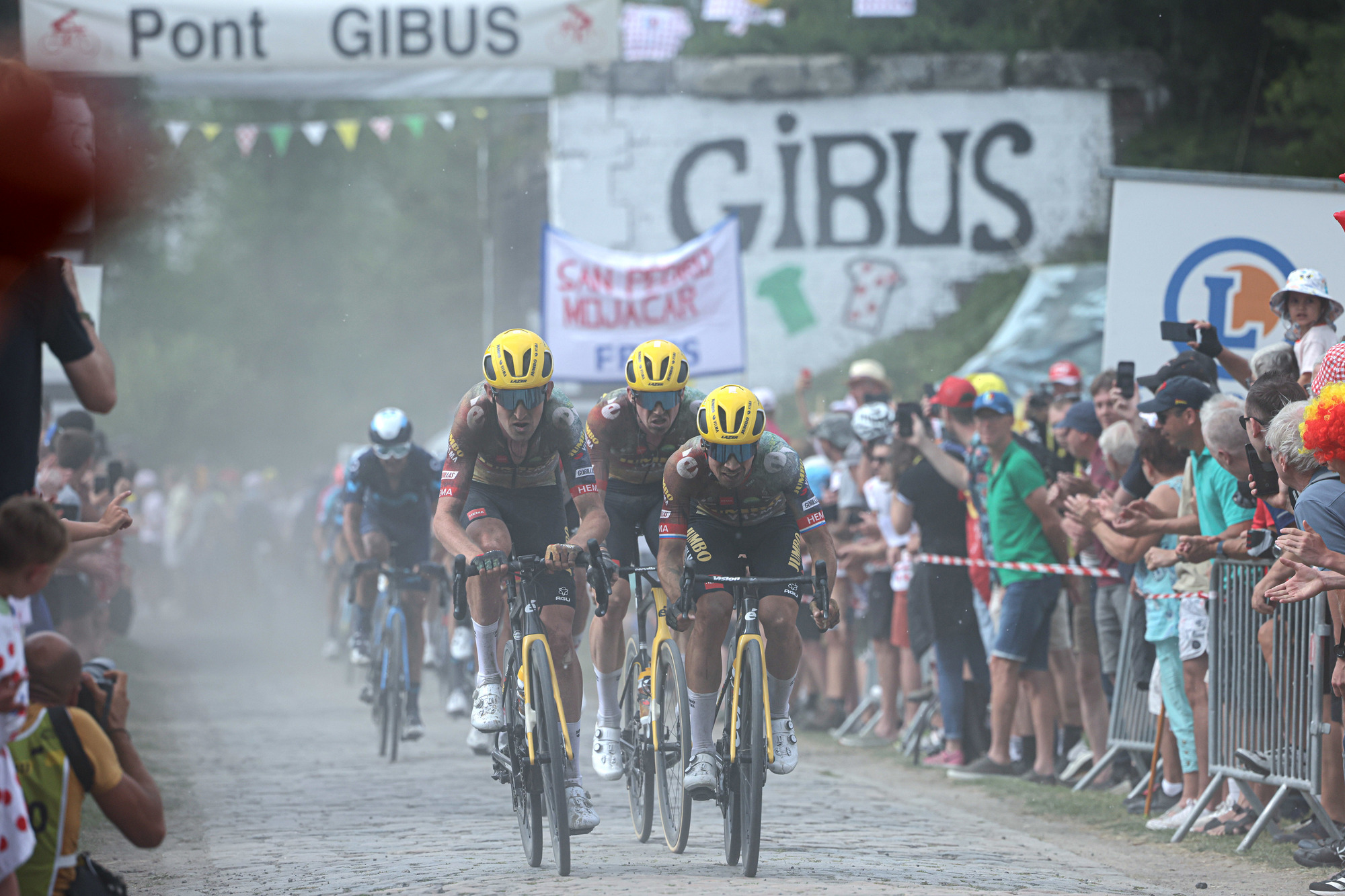
It’s not quite Tom Brady and Drew Bledsoe, but would Jonas Vingegaard have risen to become a Tour winner so soon without the misfortune that has befallen his Jumbo-Visma teammate Primož Roglič on this race?
A year ago, Roglič’s early crash left an opening for Vingegaard to step up unexpectedly as team leader. This time out, Roglič’s fall on stage 5 changed the dynamic at Jumbo in a way that allowed Vingegaard to go on and win the race.
Get The Leadout Newsletter
The latest race content, interviews, features, reviews and expert buying guides, direct to your inbox!
Roglič and Vingegaard set out from Copenhagen as near co-leaders, though Jumbo-Visma’s configuration at the Critérium du Dauphiné suggested that the Slovenian remained half a step ahead in the hierarchy. If Roglič and Vingegaard had both reached the mountains locked on the same time, Jumbo-Visma may well have elected to ride cautiously in the Alps to keep both their contenders in the hunt.
Instead, the complexion of Jumbo-Visma’s Tour was shifted by a loose bale of hay on a roundabout 30km or so from the finish of stage 5 in Arenberg. Roglič had successfully navigated six sectors of cobbles – more successfully than Vingegaard, who was chasing furiously at that point – but he was among the unfortunate fallers. Roglič dislocated his shoulder in the crash, and he was forced to pop it back in himself before remounting. Somehow, he limited his losses to 3 minutes – not enough to save his Tour ambitions, but just enough to force Pogačar to keep him under observation.
Roglič’s misfortune was the headline story from a tumultuous day on the cobbles, but, in hindsight, Jumbo-Visma’s rescue operation for Vingegaard was also pivotal. The Dane’s calamitous, three-part bike change looked to have torpedoed his chances, but Wout van Aert helped to stitch him back into the race for the yellow jersey, just as Roglič’s challenge was unravelling.
Going long at Longwy
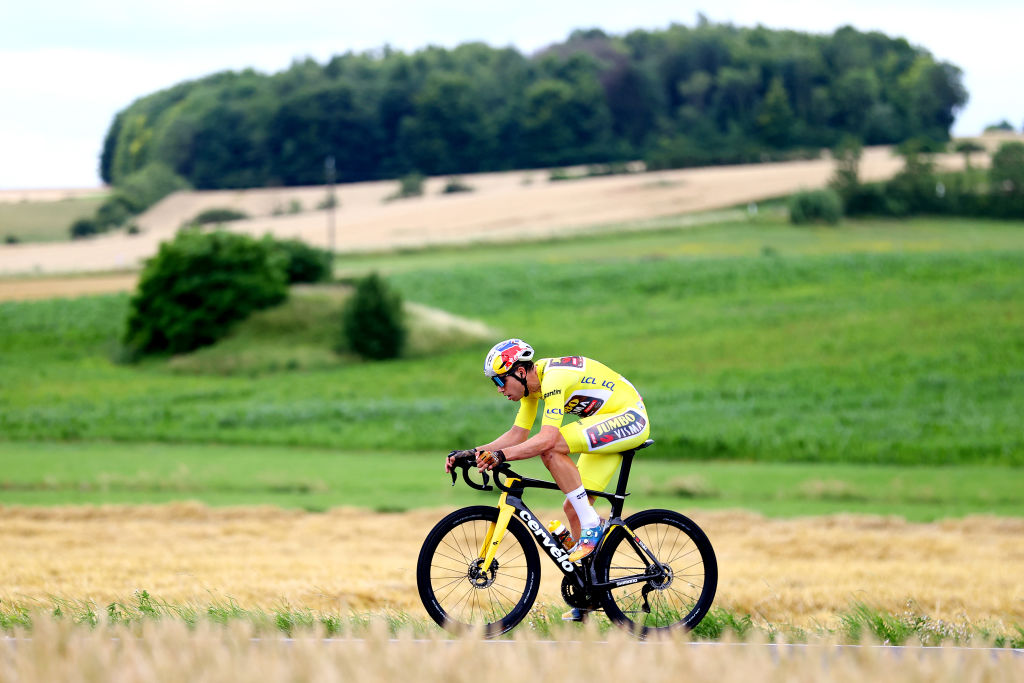
There was a time when riding the Tour was an exercise in saving energy. Writing in Cycle Sport in the 1990s, Philippa York wrote a Tour rider’s survival guide that included the immortal maxim: "Never stand when you can sit, never sit when you can lie down."
On the road, general classification contenders also meted their efforts out carefully in the opening phase, picking and choosing when to strike later on. Key climbing domestiques, too, were generally ordered to sit up where possible.
All of that appears to have gone out the window in recent seasons, at least in some specific cases. Van Aert’s all-action Tour not only saw him win three stages and the green jersey, he was also Vingegaard’s key domestique in the mountains of the third week. Yet despite that hefty workload, he saw little reason to spare himself when he spent four days in yellow in the opening week.
On stage 6 to Longwy, Van Aert took the radical step of defending his yellow jersey by going on the attack from the very start of the day. Behind, there was an ecstasy of fumbling to get on his wheel. Undeterred, Van Aert simply kept on accelerating for over an hour, stringing out the bunch until they eventually relented after 80km or so and he got his way. The Belgian would burn off his breakaway companions Jakob Fulgsang and Quinn Simmons before he was eventually reeled in by a splintered bunch on the hilly finale.
Van Aert lost seven minutes and yellow that day, but he couched his move as a sacrifice on behalf of his team, who hadn’t been charged with controlling what was always likely to be an unruly stage.
Pogačar’s UAE Team Emirates squad instead took up the reins on the run-in, and the Slovenian delivered a long, long sprint to beat his friend Michael Matthews to the line. A day earlier, Pogačar had attacked on the cobbles and 24 hours later, he would outlast Vingegaard on La Planche des Belles Filles. Like Van Aert, saving energy didn’t seem to figure in Pogačar’s thinking at this Tour, an approach that would prove costly.
Pogačar cracks on the Col du Granon
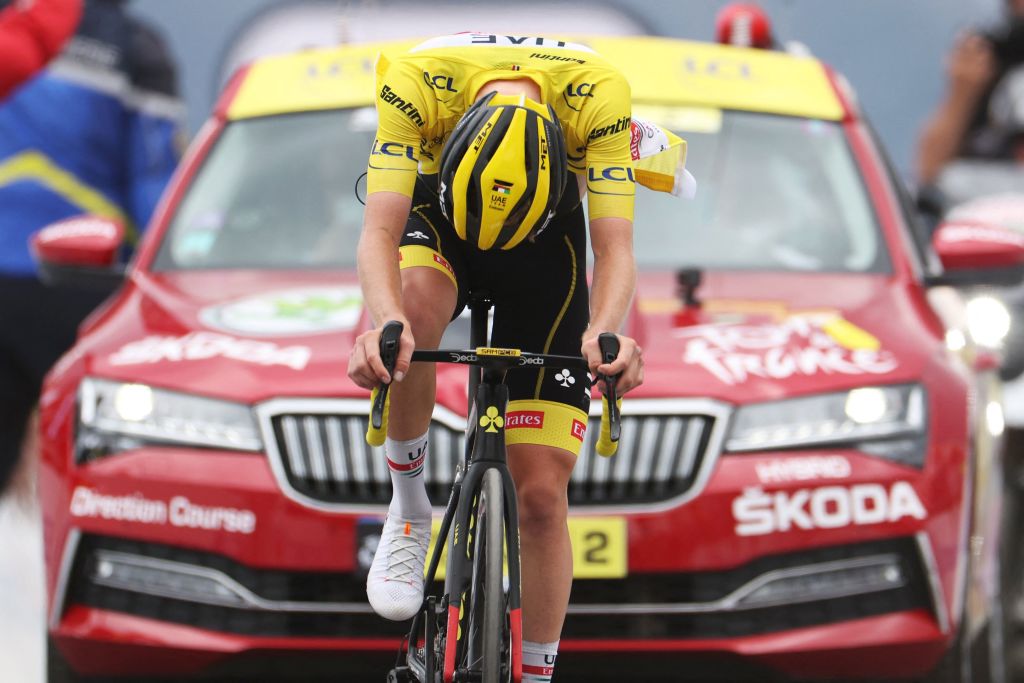
The account was ultimately settled on the Col du Granon, but Pogačar’s costly bill was run up on the Col du Galibier. The defending champion, as we saw, had made no concession to sparing himself in week one, and he saw no reason to start when Jumbo-Visma’s duo of leaders began attacking him in turns with 60km left in stage 11.
Rather than allow Roglič, almost three minutes down overall, even an inch of leeway, Pogačar immediately shut down his move, and he was obliged to do likewise when Vingegaard entered the fray shortly afterwards. By then, Pogačar’s UAE Team Emirates guard had already been distanced by the accelerations, but the yellow jersey didn’t seem unduly concerned. Instead, he joined happily in the strongest man competition, responding to Jumbo’s tag-team efforts with digs of his own.
It was like trying to calm a storm by shouting over it, yet for a time it worked. Only Vingegaard could hold Pogačar’s wheel over the Galibier. Even in the next valley, when the front group swelled and Pogačar was outnumbered by five Jumbo jerseys, it still felt like the Slovenian could defend his maillot jaune alone all the way to Paris, like Horatius at the bridge. As if to hammer home the idea, Pogačar smilingly made light of the intensity of the stage when the television motorbike drifted by.
On the upper reaches of the Col du Granon, that levity gave way to a leaden pedal stroke. Not even the presence of Rafal Majka could help Pogačar, who buckled under the weight of Vingegaard’s acceleration with 5km to go. He would lose 2:51 by the summit, together with his yellow jersey and his air of invulnerability.
The Tour had changed utterly.
Pyrenean power plays
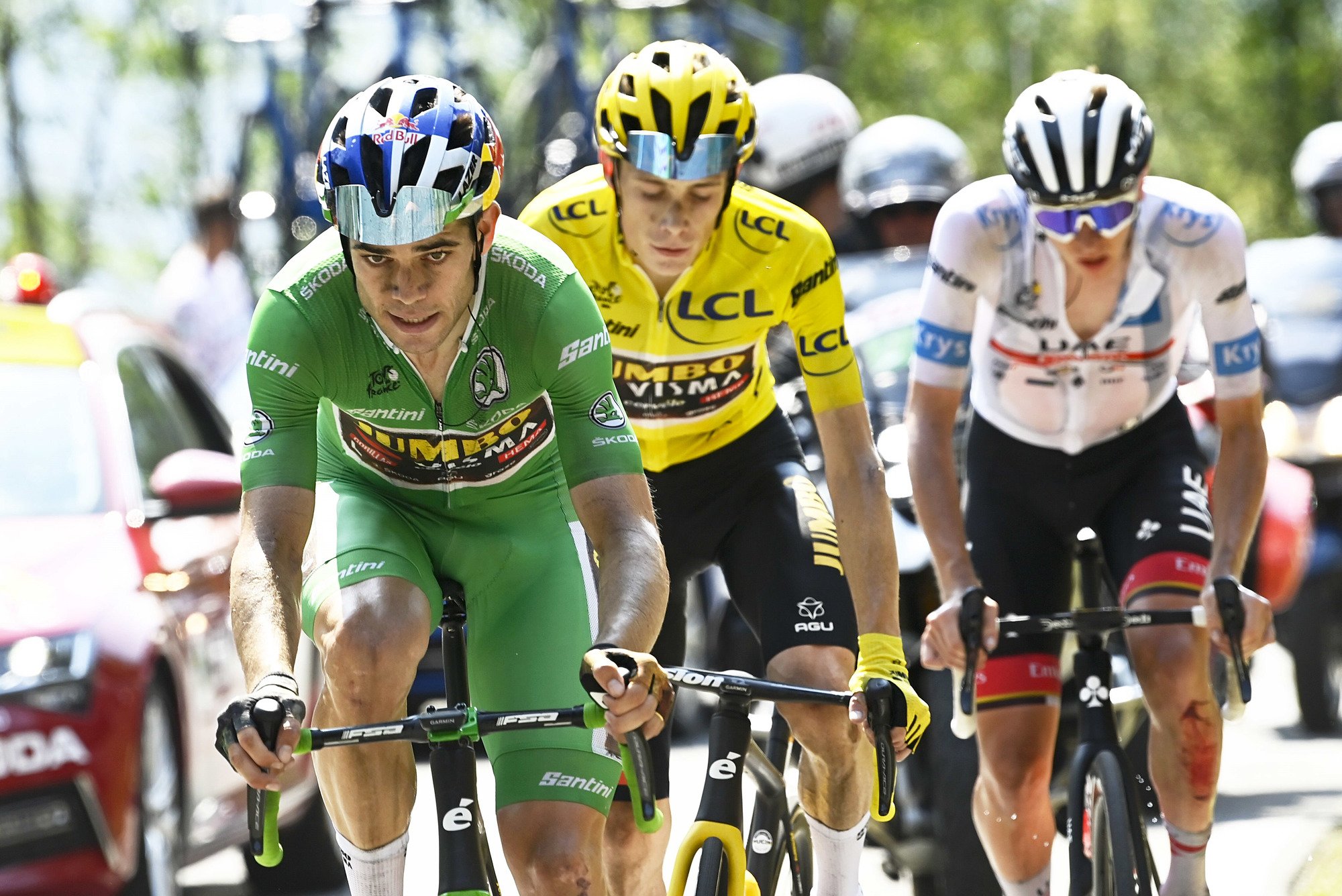
Both Jumbo-Visma and UAE Team Emirates were depleted come the final week of the Tour. COVID-19 had entered the UAE camp, leaving just four men standing by the start of stage 17, while Jumbo lost Roglič and Kruijswijk on one fraught day on stage 15.
That afternoon in Carcassonne, UAE manager Mauro Gianetti downplayed the impact of absent teammates on the final week. "The Tour will be decided by the leaders on the big mountains, not by their teams," Gianetti said. He wasn’t exactly right, but he wasn’t entirely wrong either.
As it turned out, teammates did play a significant role in the troika of stages in the Pyrenees, even if the Tour was by this point, of course, a straight duel between Vingegaard and Pogačar. Athletes of the pedigree of Thomas, Gaudu and Bardet, who all rode fine Tours - perhaps the best of their careers - were no longer in the same postcode as the men ahead of them. Jumbo and UAE were in a race of their own, as they had been from Copenhagen.
On the opening Pyrenean leg to Foix, Jumbo-Visma looked to nullify any late Pogačar offensive by depositing Van Aert in the early break, a tactic they would revisit two days later on the road to Hautacam. In between, Pogačar’s grand offensive came on stage 17, where the rouleur Mikkel Bjerg discovered hitherto unseen wings to shred the yellow jersey group at the foot of the Col du Val Louron-Azet, before Brandon McNulty took over, with only Pogačar and Vingegaard able to follow.
Pogačar outsprinted Vingegaard to claw back four bonus seconds at the finish in Peyragudes, a meagre return on the energy invested. Perhaps it was telling that Pogačar elected to stay on McNulty’s wheel throughout the raid, aside from a short dig over the top of the penultimate climb. It felt like a tacit admission that Vingegaard was the strongest man on show.
Pogačar being Pogačar, he summoned up a volley of attacks on the penultimate climb of the Tour the next day, but Vingegaard was again implacable on the Col des Spandelles. Pogačar’s crash on the descent, meanwhile, effectively ended the Tour as a contest, even if there was now one more show of force from Jumbo-Visma as they teed up Vingegaard for stage victory at Hautacam.
Van Aert had attacked from kilometre zero and spent the day on the front of the race, but he somehow still had enough force left to take up pace-making duties when Vingegaard and Pogačar bridged up to him with a little over 5km remaining. Barely a mile later, one of the best sprinters in the world had dropped the man who had won the previous two Tours.
Questions worth asking

Jumbo-Visma’s supremacy was total on this Tour. Vingegaard won the race and the king of the mountains title. Van Aert landed the green jersey with a record tally and was elected the Tour’s most combative rider. The Dutch squad won six stages, across all terrains.
Faced with such dominance, it is reasonable to ask questions, even if – as Michael Rasmussen pointed out – good answers are unlikely to be forthcoming through the medium of the press conference. Still, the Tour winners of the recent past have usually understood the drill. The Tour is a bellwether for the health of cycling, and the credibility of the maillot jaune is emblematic of the probity of the sport as a whole.
Vingegaard, like others before him, accepted the premise when faced with the question in his press conference in Gramat on Saturday evening. The gist of his answer – "trust us, we’re clean" – may have been light on detail, but at least the Dane understood that doping in cycling is an issue that always warrants discussion.
The reaction of his teammate Van Aert, on the other hand, was lamentable. Asked about the credibility of Jumbo’s performances, the Belgian complained huffily about what he deemed to be a "shit question". He should know that scepticism is only to be expected in the face of extraordinary performances. The onus is on him and his team to offer enough transparency to assuage those concerns. In that light, Van Aert’s eventual response – "We worked super hard for this, and cycling has changed" – was, if he will pardon the expression, a shit answer.
But it is true, too, that some constructive questions should be directed elsewhere, most notably to the UCI. In the 18 months since the UCI put doping controls in the hands of the ITA, not a single rider has tested positive in the men’s WorldTour. Does this mean doping has been eradicated or is the testing simply not adequate?
And what of the biological passport, which has not successfully prosecuted a WorldTour rider in years? Is the testing regime fit for purpose? Europol, who coordinated searches of Bahrain Victorious before the Tour, are among those who appear to have their doubts.
Until those issues are addressed, then questions like those fielded by Van Aert and Vingegaard on Saturday evening will inevitably – and rightly – continue for the Tour winners of the future.

Barry Ryan was Head of Features at Cyclingnews. He has covered professional cycling since 2010, reporting from the Tour de France, Giro d’Italia and events from Argentina to Japan. His writing has appeared in The Independent, Procycling and Cycling Plus. He is the author of The Ascent: Sean Kelly, Stephen Roche and the Rise of Irish Cycling’s Golden Generation, published by Gill Books.